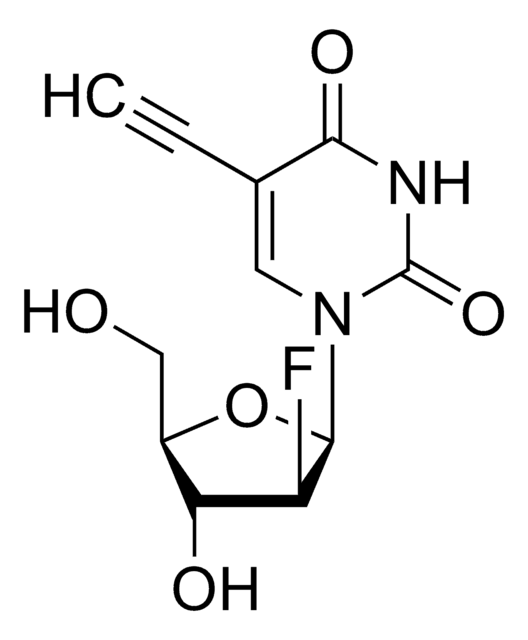BCK488-IV-IM-S
In Vivo EdU Click Kit 488
sufficient for 100 assays
Sinônimo(s):
EdU Cell Proliferation Kit
About This Item
Produtos recomendados
fluorescência
λex 496 nm; λem 516 nm
Condições de expedição
wet ice
temperatura de armazenamento
2-8°C
Procurando produtos similares? Visita Guia de comparação de produtos
Descrição geral
1. Imaging kit (BCK-IV-IM)
2. Flow cytometry kit (BCK-IV-FC)
3. High throughput screening – HTS kit (BCK-IV-HTS)
You can select the above kits with the dye of choice and the right EdU content for your animal model.
Depending on your animal model or the number of animals to be tested you can choose between three kit sizes S, M, and L with increasing EdU content, as indicated in the following table.
Kit Size Content of EdU
S 50 mg
M 500 mg
L 1000 mg
Aplicação
Palavra indicadora
Danger
Frases de perigo
Declarações de precaução
Classificações de perigo
Aquatic Chronic 3 - Eye Irrit. 2 - Muta. 1B - Repr. 2
Código de classe de armazenamento
6.1C - Combustible acute toxic Cat.3 / toxic compounds or compounds which causing chronic effects
Certificados de análise (COA)
Busque Certificados de análise (COA) digitando o Número do Lote do produto. Os números de lote e remessa podem ser encontrados no rótulo de um produto após a palavra “Lot” ou “Batch”.
Já possui este produto?
Encontre a documentação dos produtos que você adquiriu recentemente na biblioteca de documentos.
Os clientes também visualizaram
Nossa equipe de cientistas tem experiência em todas as áreas de pesquisa, incluindo Life Sciences, ciência de materiais, síntese química, cromatografia, química analítica e muitas outras.
Entre em contato com a assistência técnica








